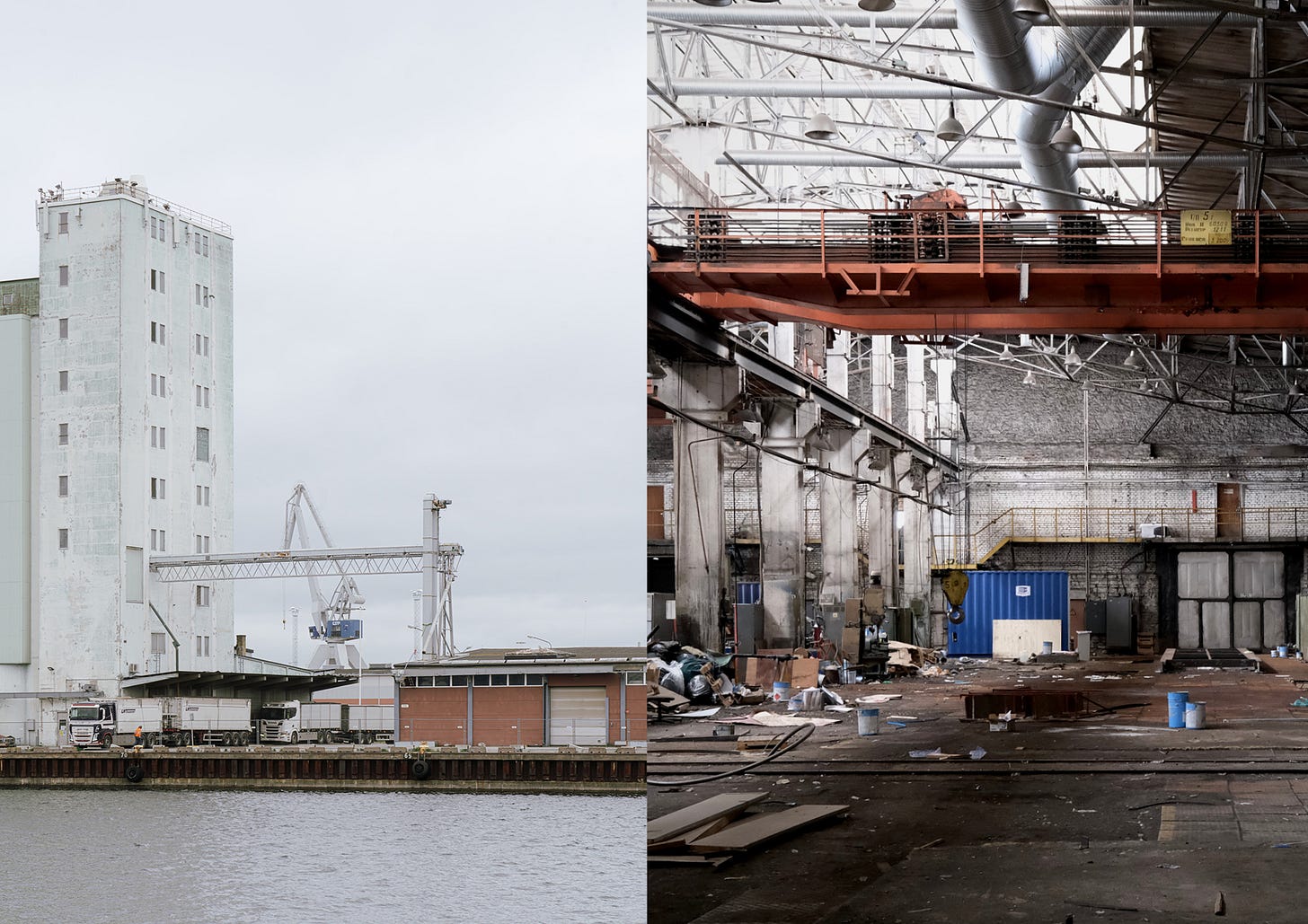The Future Already Has a Foundation
How cultural environments shape tomorrow’s cities
What if the future doesn’t need to be invented – but uncovered? All around us, traces of time and memory lie embedded in the built environment. In our rush to build forward, we often overlook the quiet value of what’s already here. But what if transformation didn’t begin with tearing down, but with tuning in? From salt-stained quay edges to thick prison walls and forgotten industrial halls, cultural environments carry identity, atmosphere, and potential. By working with complexity, rootedness and lived experience, we can shape urban futures that feel authentic, inclusive – and deeply real.
True urban change doesn’t come from growth alone – it comes from value. That’s why we at Cobe start by asking not what can be built, but what can be kept, reimagined, and reconnected. Cultural environments – with all their layers and lived-in richness – are at the core of how we shape tomorrow’s cities.
Urban development is rarely just about space. It's about memory, atmosphere, community – and the layers that tie people to places. From old factories and railway landscapes to rural village squares, these environments are not just remnants but frameworks of meaning. When activated with care, they become powerful drivers of new life.
Historically, the modern city was built on ideals of tabula rasa – blank slates and bold gestures. From Ebenezer Howard’s Garden City (1898) to the zoning doctrines of modernism, planners imagined futures disconnected from the past, where progress was measured in growth.
But as Richard Sennett argues in Building and Dwelling (2018), the open city of the future is not one of fixed plans, but one that embraces complexity, incompletion, and time. Cultural environments inherently carry this complexity. They are not static; they hold traces of change and potential for transformation.
From Growth to Value – Through Cultural Environments
Urban development has long been driven by quantity: more homes, more square meters, more infrastructure. But in a time of polycrisis – climate, resource, social fragmentation – it’s time to shift our focus from growth to value.
Because, let’s be honest – no one falls in love with a neighbourhood because it has 12% more floor area than the next. It's the winding streets, the quirky buildings with a bit of wear, and the local café where the barista knows your name, that make you feel at home.
It’s precisely the stories, textures and layers of our cultural environments that activate both memory and possibility. These places bring authenticity and depth. They remind us that not everything needs to be new to feel alive.
As Jane Jacobs wrote in The Death and Life of Great American Cities (1961): “Old ideas can sometimes use new buildings. New ideas must use old buildings.”

Rewriting the Narrative of Development
In recent years, urban planning has seen a clear shift: Instead of starting with the question, What should we build? We increasingly begin by asking, What is already here - and what deserves to stay?
This reframing places cultural environments at the core – not as obstacles, but as opportunities. It marks a move away from focusing solely on the new, toward valuing the existing – not as a limitation, but as potential.
In many of the projects Cobe works on – including Jernbanebyen in Copenhagen and Vridsløse in Albertslund – we see how transformation succeeds when local actors are co-authors of change. Residents, entrepreneurs, and associations bring knowledge and momentum rooted in lived experiences. Their connection is often anchored in the places they already inhabit – shaped by history, use, and cultural meaning.

This echoes Roberta Brandes Gratz’s idea of cities “back from the edge” (Cities Back from the Edge, 1998), where meaningful change grows from within – not from above.
Whether working in Krulli, Tallinn or the industrial harbor edge of Nyhamnen, Malmö – where silos, warehouses and a salt-weathered quay still hold the traces of working life – we approach these places not as empty plots, but as cultural terrains. We ask: What stories do the buildings tell? What spatial qualities and social connections can be reimagined?
It’s not about nostalgia. It’s about activating the specific. Old structures often hold far more adaptability than we expect – if we meet them with respect and care.

Cities That Remember – and Renew
The cities we admire are often those with roots. Not necessarily the most efficient, but the ones that feel lived in – flexible and adaptable yet anchored in something real.
Cultural environments offer exactly this: the possibility of building forward while staying connected to the past. They allow us to create continuity, character, and connection in a time when many urban places risk becoming generic.
So instead of asking what we should build next, perhaps we should ask: What can we build on? What wants to remain? What futures are already hidden in the existing?
Because sometimes, the future doesn’t need to be invented.
It just needs to be revealed.
The future already has a foundation. We just need to build on it.
References
Jane Jacobs, The Death and Life of Great American Cities, 1961
Richard Sennett, Building and Dwelling: Ethics for the City, 2018
Roberta Brandes Gratz, Cities Back from the Edge, 1998
Ebenezer Howard, To-Morrow: A Peaceful Path to Real Reform (The Garden City), 1898


Spot on!
How do you see urban planners and policymakers balance the need for new construction and population growth with the desire to preserve and activate existing cultural environments—without turning them into static museum pieces?